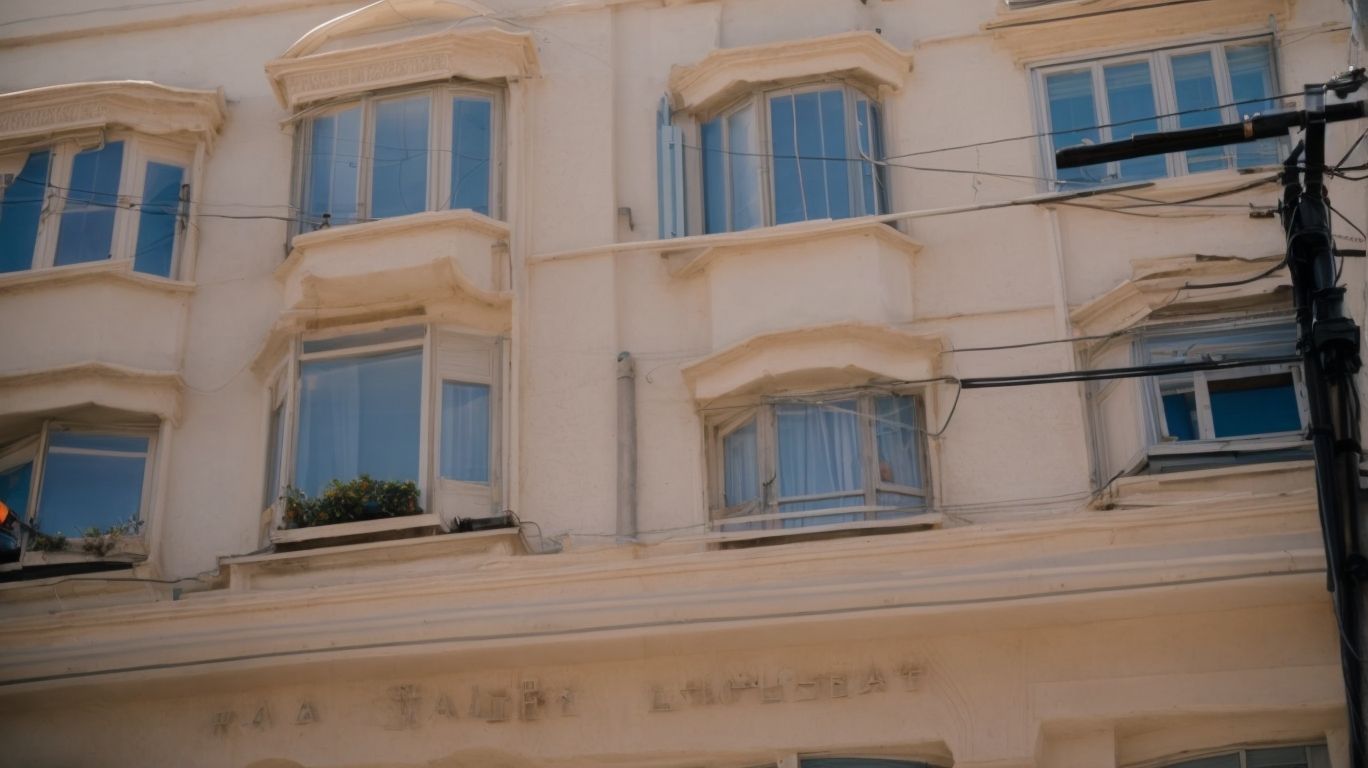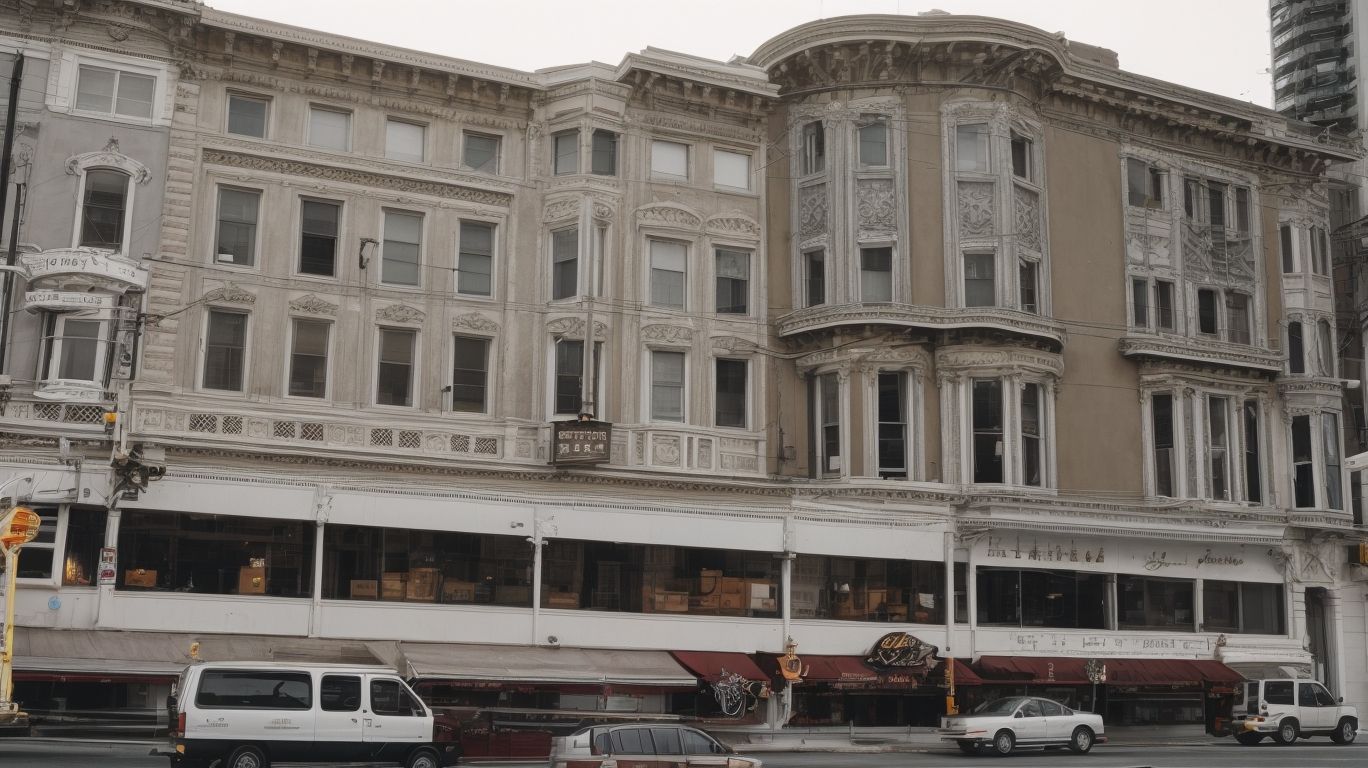
San Francisco Soft-Story Retrofit Regulations: What You Need to Know
Soft-story buildings are vulnerable to collapse during earthquakes due to their weak first floors, which often serve as parking garages or open commercial spaces. In response to this potential danger, San Francisco has implemented mandatory retrofit regulations to ensure the safety and stability of these structures.
In this article, we will explore the reasons for retrofitting, the specific requirements of the regulations, the financial aspects, the benefits of compliance, and the necessary steps for building owners to follow. Whether you own a soft-story building or are simply curious about these regulations, this article will provide you with the essential information you need to know.
What Are Soft-Story Buildings?
Soft-story buildings, especially prevalent in San Francisco, are multi-family residential properties characterized by one or more floors with large openings, typically for parking, which weaken the structural integrity of the building during an earthquake.
These buildings pose significant seismic risks due to the lack of lateral support in the open ground floor. This makes them more susceptible to collapse and structural damage during seismic events.
In response to this vulnerability, building codes in seismic-prone areas like San Francisco have been updated. These codes now include specific regulations and retrofitting requirements for soft-story buildings.
However, despite these measures, soft-story structures still remain a common sight in many urban areas. This underscores the ongoing need for awareness and proactive seismic retrofitting efforts to enhance public safety and minimize potential earthquake-induced damage.
Why Do Soft-Story Buildings Need Retrofitting?
Soft-story buildings require retrofitting due to their susceptibility to seismic hazards, as their structural deficiencies compromise their stability and performance during earthquakes, necessitating compliance with the seismic retrofit ordinance to strengthen their resistance.
This process is critical to ensure the safety of occupants and the preservation of the building’s integrity.
The retrofitting of soft-story buildings addresses specific vulnerabilities, such as weak first floors and open front walls, which are particularly susceptible to collapse during seismic events. By addressing these vulnerabilities, the overall structural stability of the building is significantly improved, reducing the potential for extensive damage and ensuring the resilience of the entire structure.
Retrofitting not only protects lives and property but also contributes to the overall safety and stability of the surrounding community, making it an essential investment in disaster preparedness and risk mitigation.
What Are the San Francisco Soft-Story Retrofit Regulations?
In San Francisco, the soft-story retrofit regulations encompass municipal requirements that mandate the implementation of a seismic retrofit program. This program involves comprehensive engineering analysis to ensure compliance with specified deadlines and achieve retrofit compliance.
This seismic retrofit program is designed to address the vulnerability of soft-story buildings to potential earthquake damage. It emphasizes the safety and resilience of the city’s infrastructure.
The engineering analysis involves evaluating the structural integrity and potential vulnerabilities of these buildings. This ensures that the retrofit measures are appropriately tailored to mitigate the seismic risks.
The deadlines for compliance set by the municipal regulations are structured to expedite the implementation of necessary retrofits. This enhances the overall seismic resilience of the city’s building stock.
What Buildings Are Affected by the Regulations?
The San Francisco soft-story retrofit regulations primarily impact multi-family buildings and residential properties with characteristic soft-story vulnerabilities, necessitating their compliance with the mandated retrofitting requirements.
Buildings with open parking or commercial spaces on the ground floor and residential units above are at high risk of structural instability during earthquakes. This is why retrofit regulations have been put in place to address potential damage and ensure the safety of occupants. These regulations involve implementing engineering solutions to strengthen the buildings’ structural integrity.
What Are the Deadlines for Compliance?
Building owners in San Francisco must adhere to specific compliance deadlines outlined in the soft-story retrofit regulations. This includes following a prescribed timeline to ensure timely completion of the required retrofitting measures.
In order to safeguard against potential collapse during seismic events, the city has set deadlines for compliance with retrofit measures for vulnerable buildings. These deadlines vary depending on the classification of the building, with specific timelines for notification, evaluation, and implementation. It is crucial for building owners to be aware of these deadlines to avoid penalties and ensure the safety of occupants and neighboring properties. By adhering to these timelines, the city’s building stock will become more resilient to seismic activity.
What Are the Required Retrofit Measures?
The required retrofit measures encompass comprehensive structural modifications, which necessitate obtaining building permits and adhering to the seismic retrofit program to ensure full compliance with the regulatory framework.
These modifications are essential for reinforcing the structural integrity of buildings in high-risk seismic zones. Through this program, property owners are guided through the process of obtaining the necessary permits and ensuring that the retrofitting work is carried out according to the specified standards.
The overarching goal is to enhance the safety and resilience of buildings against potential earthquakes, thereby safeguarding lives and minimizing property damage. By integrating these measures, the community can build a more secure and sustainable environment for the future.
How Much Does Soft-Story Retrofitting Cost?
The cost of retrofitting soft-story buildings in San Francisco varies depending on factors such as construction costs, the complexity of the retrofitting process, and the extent of structural enhancements required.
Construction costs are a significant factor in the overall expenses of soft-story retrofitting. This includes materials, labor, and specialized equipment, all of which can greatly impact the budget. The retrofitting process itself, which involves assessment, engineering, and construction, also adds to the overall expenses.
Additionally, comprehensive structural enhancements, such as adding shear walls or strengthening existing columns, further contribute to the cost considerations. Therefore, it is crucial to conduct a thorough evaluation to determine the specific requirements for each building and formulate a comprehensive retrofitting plan. This ensures the structural safety of these vulnerable structures.
How Can Building Owners Finance Soft-Story Retrofitting?
Building owners in San Francisco can explore various financing options for soft-story retrofitting, including potential retrofit incentives that aim to alleviate the financial burden associated with implementing the necessary structural upgrades.
In order to support the seismic reinforcement of soft-story buildings, there are various incentives available such as low-interest loans, grants, tax credits, or rebates. These incentives are specifically designed to assist building owners in their retrofit projects. Additionally, there are city programs and community development financial institutions that offer financial aid and technical support for these projects. By utilizing these resources, building owners can alleviate the financial burden and ensure the safety and resilience of their structures in the event of a seismic event.
What Are the Benefits of Soft-Story Retrofitting?
Soft-story retrofitting in San Francisco offers multifaceted benefits, including mitigating seismic risk, enhancing building resilience, and implementing structural improvements that bolster overall safety and stability.
By addressing the vulnerability of soft-story buildings to seismic events, these retrofitting measures help safeguard lives, protect property, and maintain critical infrastructure during earthquakes. They contribute to the longevity and sustainability of urban structures, aligning with San Francisco’s commitment to environmental and community resilience.
These advancements in building safety also positively impact insurance costs and property values, making them a prudent investment for property owners and the community at large.
Increased Safety
Soft-story retrofitting in San Francisco prioritizes increased safety through meticulous seismic analysis, fortifying building safety, and enhancing seismic resistance to safeguard occupants and minimize structural vulnerability.
Soft-story retrofitting is crucial for buildings in San Francisco to withstand earthquakes. This process strengthens vulnerable structures and greatly reduces the risk of collapse during seismic events, ensuring the safety of residents and occupants.
With the use of advanced technology and engineering expertise, these renovations improve the structural integrity, minimizing the impact of seismic forces and increasing the overall resilience of the built environment in the city.
Improved Structural Integrity
The process of soft-story retrofitting in San Francisco facilitates improved structural integrity by implementing crucial upgrades, reinforcing building elements, and adhering to rigorous retrofitting requirements to enhance overall resilience.
This comprehensive approach to retrofitting addresses the vulnerability of soft-story buildings, which are susceptible to collapse during seismic events.
By strengthening the lower levels and foundation, structural engineers aim to mitigate potential damage and protect occupants.
The significance of these structural upgrades cannot be overstated, as they play a vital role in safeguarding lives and preserving property.
Meeting stringent retrofitting requirements ensures that the buildings are fortified to withstand seismic forces and contribute to the overall safety and resilience of the community.
Enhanced Property Value
Soft-story retrofitting in San Francisco contributes to enhanced property value through comprehensive evaluation, realizing substantial retrofit benefits, and promoting building sustainability, thereby positioning properties as resilient and sought after.
This practice not only ensures structural resilience against seismic activity but also boosts the market appeal of properties.
With a focus on evaluation, property owners gain insights into potential vulnerabilities and the necessary solutions, solidifying the long-term value of their investment.
Retrofitting benefits encompass increased safety, improved structural integrity, and the potential for cost savings in the form of reduced maintenance and insurance premiums.
By enhancing building sustainability, these retrofits align with San Francisco’s commitment to environmental responsibility, creating a positive impact on both property value and community well-being.
Compliance with Regulations
Soft-story retrofitting in San Francisco ensures compliance with regulations, actively mitigating risks, and fulfilling the essential retrofitting requirements to align with the city’s overarching objectives for structural resilience and public safety.
This comprehensive approach integrates seismic retrofitting mandates, aiming to strengthen buildings against potential earthquake damage. This helps reduce vulnerabilities and bolster the community’s safety and well-being.
By adhering to these regulations and implementing structural improvements, property owners contribute to the broader city-wide efforts to enhance the overall resilience of San Francisco’s built environment. This safeguards against potential risks and fortifies the structural integrity of buildings for the future.
What Are the Steps to Retrofitting a Soft-Story Building?
Retrofitting a soft-story building in San Francisco involves several key steps, including engaging qualified structural engineers, developing comprehensive architectural plans, and addressing foundation retrofit requirements to ensure the structural integrity of the building.
When engaging structural engineers, it is crucial to thoroughly assess the building’s existing structural stability and potential weaknesses.
The development of architectural plans needs to encompass both aesthetic and functional aspects while ensuring compliance with local building codes.
Addressing foundation retrofit requirements may involve reinforcing existing foundations or introducing new structural elements to strengthen the building’s overall stability.
A collaborative approach between engineers, architects, and construction professionals is essential for a successful retrofit project, ensuring the safety of the building and its occupants.
Hire a Qualified Engineer
In San Francisco, the initial step in retrofitting a soft-story building involves hiring a qualified engineer to conduct engineering evaluations and perform a detailed seismic vulnerability assessment to inform the retrofit design process.
Structural engineers play a critical role in assessing the integrity of buildings, identifying weaknesses, and determining necessary retrofitting measures to improve resilience against earthquakes. Their expertise in seismic engineering and knowledge of local building codes are crucial for ensuring that retrofitting strategies comply with San Francisco’s regulations. With a comprehensive understanding of the city’s geological conditions, engineers can develop tailored solutions that effectively address a building’s vulnerabilities.
Obtain Necessary Permits
Securing the necessary building permits is a pivotal step in the soft-story retrofit process in San Francisco. This ensures adherence to prescribed construction methods and facilitates the implementation of retrofitting measures within regulatory parameters.
Permits for soft-story retrofitting are essential for ensuring safety standards are followed and that licensed professionals carry out the construction. Obtaining permits demonstrates a property owner’s commitment to the stability and safety of their building, contributing to the overall resilience of San Francisco’s infrastructure.
The permitting process also allows authorities to track and monitor the progress of retrofit projects, ensuring they meet the necessary structural and seismic standards.
Complete Retrofitting Measures
Executing the identified retrofitting measures is a critical stage in the soft-story retrofit process in San Francisco, encompassing diligent construction efforts to achieve seismic retrofit compliance and ensure structural enhancements.
This pivotal phase involves the implementation of specialized techniques to reinforce the existing structures of soft-story buildings. This includes installing steel moment frames, shear walls, and foundation bolting.
The overarching goal is to fortify these vulnerable buildings, minimizing the risk of collapse or extensive damage in the event of an earthquake. By integrating these retrofit measures, the city aims to enhance community safety and resilience. This is particularly important in areas prone to seismic activity, mitigating potential socio-economic repercussions.
What Happens If a Building Owner Fails to Comply with the Regulations?
Failure to comply with the soft-story retrofit regulations in San Francisco may result in repercussions, such as permit violations, mandatory inspections, and potential penalties for non-compliance with the mandated retrofitting requirements.
Non-compliant buildings can result in severe financial penalties and legal repercussions. Failure to meet retrofitting requirements may lead to citations, fines, or even legal action for property owners. In the event of structural failures during seismic events, the safety risks posed by non-compliant buildings can result in significant liability. Thus, it is crucial for property owners to prioritize compliance with these regulations to ensure the safety and resilience of their structures and avoid the serious consequences of non-compliance.




No Comments